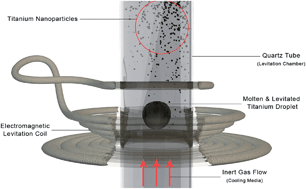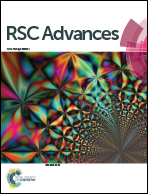Synthesis and characterization of pure metallic titanium nanoparticles by an electromagnetic levitation melting gas condensation method
Abstract
Pure titanium nanoparticles were synthesized by utilizing an Electromagnetic Levitation Melting Gas Condensation (ELM-GC) method. Pure bulk titanium samples were melted and evaporated by electromagnetic levitation technique in an inert gas atmosphere in a silica tube. Titanium nanoparticles were formed from ascending vapor by employing high purity argon and helium as carrier gases and cooling agents. Particle size and morphology of the produced nanoparticles were studied by Field-Emission Scanning Electron Microscopy (FE-SEM) and Dynamic Light Scattering (DLS) analysis. Results showed almost spherical nanoparticles with a narrow size distribution under both cooling atmospheres. The purity of the produced titanium nanoparticles was confirmed through powder X-ray diffraction (XRD) as well as X-ray fluorescence (XRF), and Inductively Coupled Plasma Atomic Emission Spectroscopy (ICP-AES) analysis. As to the impact of carrier gas, titanium nanoparticles synthesized under helium atmosphere had smaller particle size with narrower particle size distribution compared to those produced in argon. Average particle size of synthesized titanium nanoparticles under Ar and He atmospheres were about 42 and 31 nm, respectively.


 Please wait while we load your content...
Please wait while we load your content...